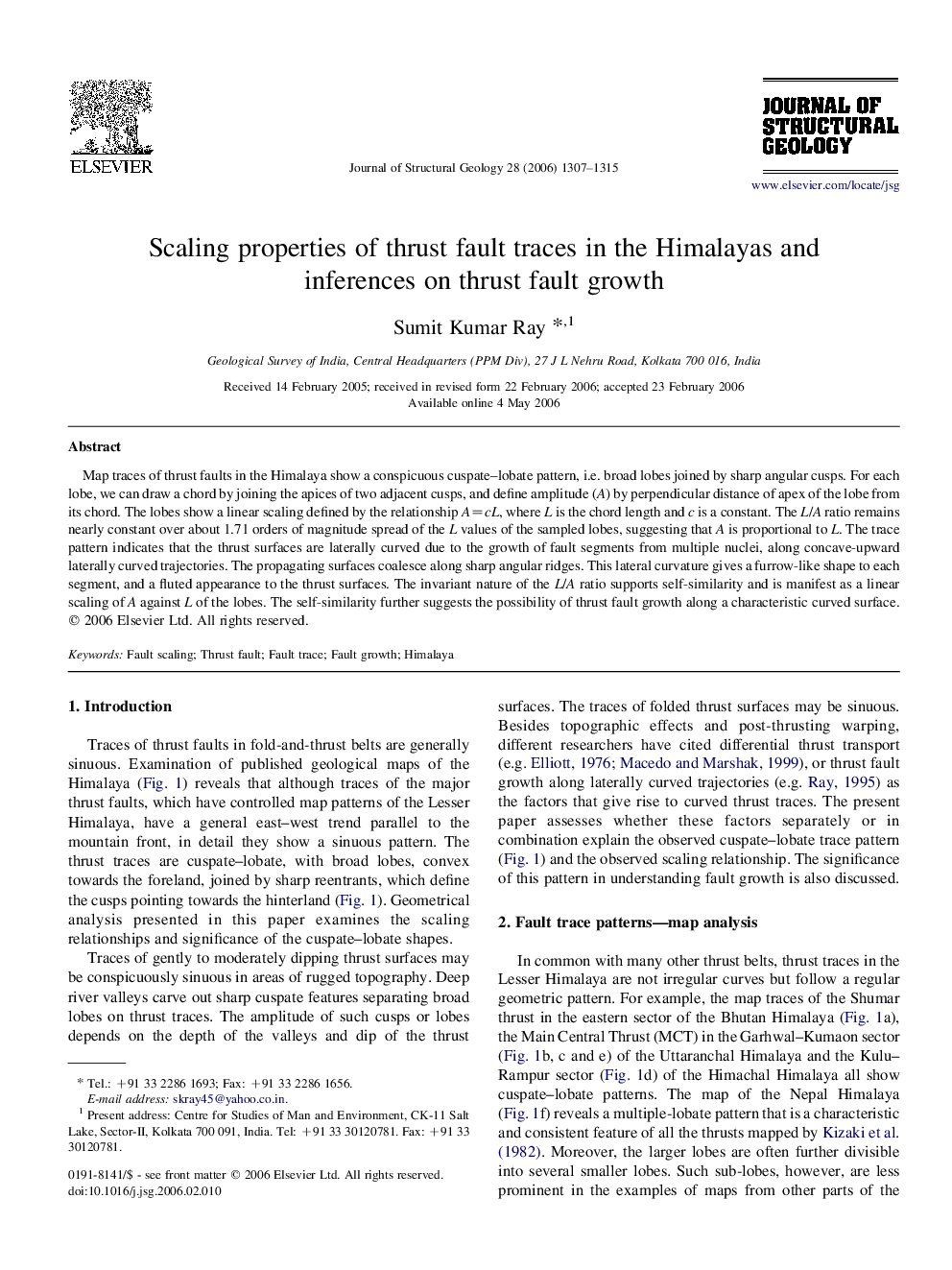| Article ID | Journal | Published Year | Pages | File Type |
|---|---|---|---|---|
| 4734190 | Journal of Structural Geology | 2006 | 9 Pages |
Map traces of thrust faults in the Himalaya show a conspicuous cuspate–lobate pattern, i.e. broad lobes joined by sharp angular cusps. For each lobe, we can draw a chord by joining the apices of two adjacent cusps, and define amplitude (A) by perpendicular distance of apex of the lobe from its chord. The lobes show a linear scaling defined by the relationship A=cL, where L is the chord length and c is a constant. The L/A ratio remains nearly constant over about 1.71 orders of magnitude spread of the L values of the sampled lobes, suggesting that A is proportional to L. The trace pattern indicates that the thrust surfaces are laterally curved due to the growth of fault segments from multiple nuclei, along concave-upward laterally curved trajectories. The propagating surfaces coalesce along sharp angular ridges. This lateral curvature gives a furrow-like shape to each segment, and a fluted appearance to the thrust surfaces. The invariant nature of the L/A ratio supports self-similarity and is manifest as a linear scaling of A against L of the lobes. The self-similarity further suggests the possibility of thrust fault growth along a characteristic curved surface.
